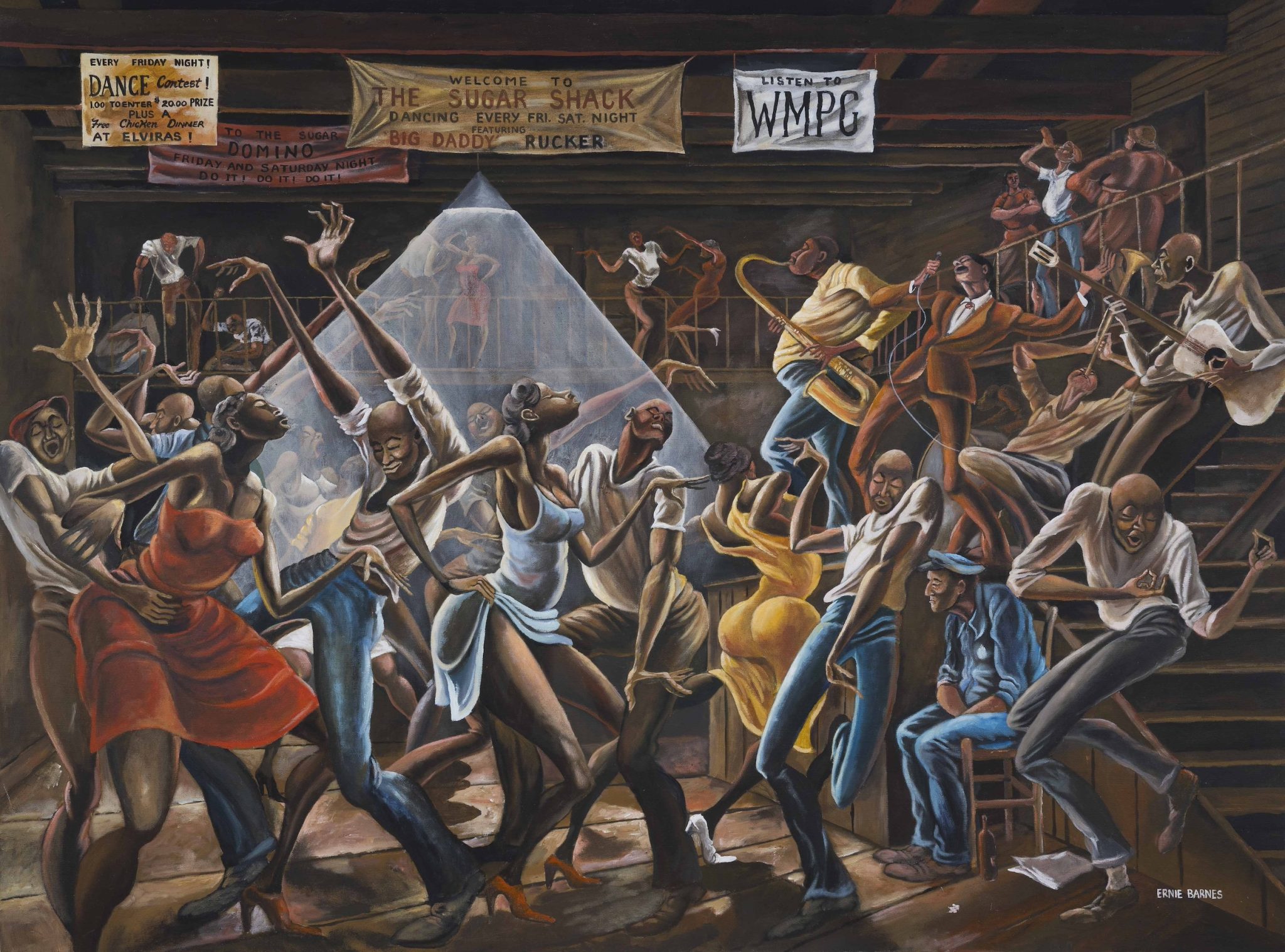
SPECIAL PRESENTATION
The Sugar Shack
OPENS
November 7, 2023
CLOSES
November 10, 2024
SHARE
About the Presentation
Visitors to the Blanton can view The Sugar Shack, Ernie Barnes’s famous masterpiece featuring dancing figures in a crowded Black music hall in segregated mid-century North Carolina.
The Sugar Shack became a Black cultural icon after the first version was featured on the cover of the 1976 Marvin Gaye album, I Want You. That same year, Barnes created this second version, which garnered wider fame when it was added to the end credits of the groundbreaking sitcom Good Times and later became a popular printed reproduction. The painting is on loan to the Blanton from Houston collectors Lara and Bill Perkins, who acquired it at a record-smashing auction last year. It was previously on view 2022-23 at the Museum of Fine Arts, Houston.
Included with museum admission and Blanton All Day admission. Located in the American Art galleries on the second floor of the museum.
Members get free admission.
About “The Sugar Shack“
Former professional football player Ernie Barnes was known for his dynamic, energetic paintings
filled with elongated, muscular figures. The Sugar Shack was based on the artist’s childhood memory of sneaking into a local Black club in segregated North Carolina to experience what he called the “sins of dance.” Strong diagonals in the floorboards, staircase, and cone of light reinforce the sense of motion produced by the figures’ swaying bodies and expressive gestures. The dancers’ closed eyes—a common feature of Barnes’s paintings—reflect his conviction that “we are blind to one another’s humanity.”
Barnes’s painting style and subject matter, centering Black life, extend the tradition of social realism seen in earlier works in this gallery. Both Philip Evergood’s Dance Marathon and Thomas Hart Benton’s Romance also document everyday life and offer social commentary.

